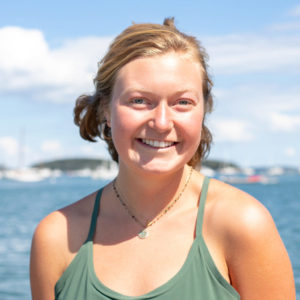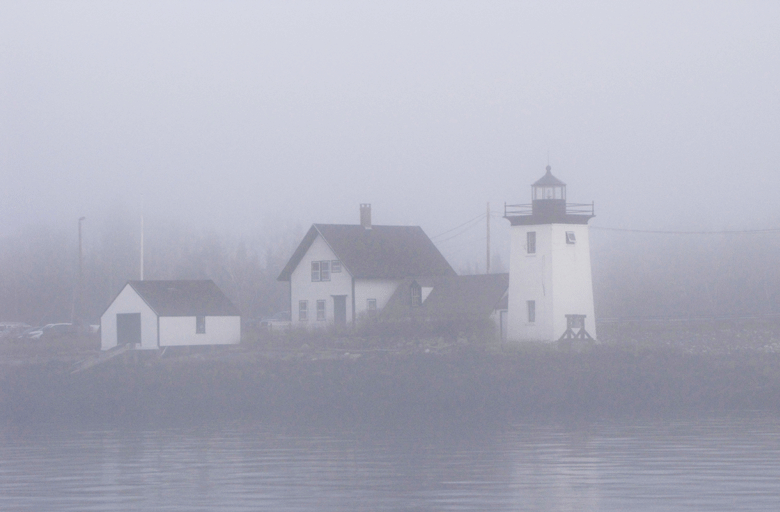Reflections is written by Island Fellows, recent college grads who do community service work on Maine islands and in coastal communities through the Island Institute, publisher of The Working Waterfront.
By Olivia Lenfestey
Mostly, my days on Islesboro are filled with the kind of intangible busyness distinctive to life on an island. In addition to working on a sea level rise adaptation project, my work on Islesboro is to restore the exhibits at the Grindle Point Lighthouse and Sailor’s Memorial Museum and create an online catalog of the artifact collections.
Throughout the fall and into the winter, I have been working at the historical society where the museum’s artifacts are being stored while the interior of the lighthouse is repainted. The historical society building is in the old town hall, a tall cape style built in 1894 and echoey with the sounds of the past. The artifacts take up most of the space, framed black and white photographs line the walls while 18th century baby cradles and rusted lighthouse lanterns lay on tables in the center.
The archiving process is slow and strange. Each object must be handled carefully as I photograph, measure, identify, number, and enter that data into the cataloging software. This is a process of familiarization, allowing time to sift through the objects, large and small, to hear the story that our collection is telling.
I find many odd things—antique barometers, wreaths made of human hair, shell lattice designs crafted by sailors, and far too many boat models…
Among the museum artifacts, I find many odd things—antique barometers, wreaths made of human hair, shell lattice designs crafted by sailors off at sea, and far too many boat models to keep track of. Each artifact is different and peculiar, curious and inviting. I find myself contemplating how all these things have come to end up here, on Islesboro, three miles offshore in the middle of Penobscot Bay.
I have come to understand this process as a hands-on method to learn the idiosyncratic history of the island. Before beginning my fellowship, I could not distinguish between different types of navigation lights on a schooner, nor the purpose of a Taffrail log. Now, I have held them in my hands and felt their unique history. Everything I find is coated in dust, but with each tedious entry, the many layers of the island’s past begin to unravel.

Recently, I have been receiving help from other community members to complete the catalog. People who work at the Historical Society, or who otherwise know Islesboro’s history because it is also their family’s history, have generously offered me help. Through these collaborations, the artifacts we identify move through time and come alive.
I hold up a sepia photograph of a man with a large mustache, kind eyes, and stern expression, held in a rusting metal oval frame. Recognition sweeps across the faces of the women I am working with. “Oh, I think that’s Amasa Hatch. He built the house across from where I live now.” No one is unknown on an island.
Linda, the former librarian, takes photos of the portrait and the measurements of the frame, calling them out to me so that I can enter the information into the computer. Meanwhile, Carrie, an islander who has been visiting Islesboro since she was a child and an employee at the Historical Society, looks up the identified man in the latest edition of Islesboro Island History, covering the years of 1893-1993. She finds that Capt. Hatch had nine children, one of whom was named Wealthy.
My work in the museum has taught me to see history and places as continuing stories. At the end of my day, as I drive home down the island’s only main road, I stop at the small grocery store. Before I check out, I chat with a man in between the aisles and ask him what his name is. Last name Hatch. I smile, grab my last items off the shelf and think that perhaps he has his great, great, great, great grandfather’s eyes.
Olivia Lenfestey works with the Grindle Point Lighthouse Museum and Islesboro’s Sea Level Rise Committee. She grew up in Santa Fe, N.M. and graduated from Pitzer College in Claremont, California, where she studied English, creative writing, and environmental analysis.





